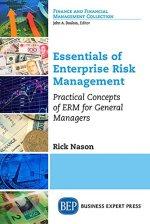Question
Case Scenario 1: University Registration and Induction Process UK universities host an increasing number of international students who join them every year. Late September is
Case Scenario 1: University Registration and Induction Process UK universities host an increasing number of international students who join them every year. Late September is usually very busy time for the students' arrival and registration. To manage the registration process for thousands of students within few days many universities have introduced a new set up, which organise the registration through a clear sequence of activities that all students should follow. The whole registration process can be broken down as follows. First, the registration desk receives the documents from each student, and check if there is any missing document. If there is any missing document and if it is a major document like passport, then the registration is delayed until the document is provided. If the missing document is not major (for example a copy of a previous training certificate) the registration can go ahead, but the students is given 2-4 weeks to provide it. All documents are scanned, and returned to the student. Then the IT desk sets up an IT account for the student to give him/her access to the university's online services and learning facilities. The IT desk can set up the student access to the university network via his/her own devices (e.g. tablet or laptop) if the student asks for it. Next, a photo is taken of the student and his/her access card is issued. After IT set ups, the Student Service desk provide the student with full guidelines about the academic and social life in the university. If the student lives on campus accommodation, further details are given to him/her. Extra induction material and presentations are also provided to students with disability. Finally, the key health and safety rules and regulations of the university are reviewed for the student by the H&S officers. Some students, depending on where they have travelled from, may need to have some vaccinations too. They receive full information about it before they leave the registration and induction area.
Task 1 Develop a process map or flow chart for the selected case, and examine its core steps and supporting processes. Then, identify its key input and output data and classify and differentiate them in terms of unstructured and semi-structured data. Recommend an application software which can be employed to process the business activities of the case scenario above, and evaluate its benefits and drawbacks for business processing. Task 2 Identify the key decisions to be made in the business process above, and compare the support(s) needed to be available for making those decisions. Then, explore the opportunities for intelligent systems to contribute to the decision-making processes and justify their required features. Accordingly, compare and contrast some information systems/ technologies that can be used to support organising the selected business process, as described in the case scenario, at strategic, tactical and operational levels. Task 3 Specify one or two applications of business intelligence for the business process that you chose earlier, and determine its particular tools and techniques. Elaborate your answer by using specific examples in the context of the case scenario. Based on the application(s) you specified above, design a business intelligence tool (or application or interface) that can support a specific task (e.g. decision making, problem solving, prioritising, and customer relationship management) of the process, mapped earlier for your LO1. Try to customise different features of your business intelligence tool to enhance its user-friendliness or functional interface. Department of Information Technology Page 4 of 6 Critically review your design in terms of how it meets specific user or business requirements and its customisation capabilities. Task 4 Review the key decisions being made in the above case scenario, and discuss how business intelligence tools can enhance their effectiveness. Given that legal issues are very critical in your selected case scenario, explore their involvement in exploitation of business intelligence tools recommended earlier for the case scenario above. Through a wider research on other organisations or sectors, identify two examples of business intelligence tools, which are employed to improve their operations. Discuss how business intelligence can help organisations to enhance their competitiveness and expand their markets. In particular, evaluate the role of security legislations in the business intelligence's above achievements.
Step by Step Solution
There are 3 Steps involved in it
Step: 1

Get Instant Access to Expert-Tailored Solutions
See step-by-step solutions with expert insights and AI powered tools for academic success
Step: 2

Step: 3

Ace Your Homework with AI
Get the answers you need in no time with our AI-driven, step-by-step assistance
Get Started


